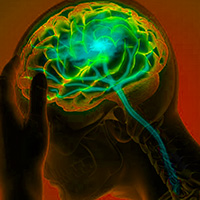Ischemic stroke in a patient with interatrial block: Is it only a coincidence or a clear relationship?

Submitted: November 22, 2020
Accepted: January 5, 2021
Published: April 13, 2021
Accepted: January 5, 2021
Abstract Views: 839
PDF: 404
Publisher's note
All claims expressed in this article are solely those of the authors and do not necessarily represent those of their affiliated organizations, or those of the publisher, the editors and the reviewers. Any product that may be evaluated in this article or claim that may be made by its manufacturer is not guaranteed or endorsed by the publisher.
All claims expressed in this article are solely those of the authors and do not necessarily represent those of their affiliated organizations, or those of the publisher, the editors and the reviewers. Any product that may be evaluated in this article or claim that may be made by its manufacturer is not guaranteed or endorsed by the publisher.
Similar Articles
- Alessandra Schiavo, Francesca M. Stagnaro, Andrea Salzano, Alberto M. Marra, Emanuele Bobbio, Pietro Valente, Simona Grassi, Martina Miniero, Michele Arcopinto, Margherita Matarazzo, Raffaele Napoli, Antonio Cittadini, Pregabalin-induced first degree atrioventricular block in a young patient treated for pain from extrapulmonary tuberculosis , Monaldi Archives for Chest Disease: Vol. 87 No. 3 (2017)
- Domenico Galzerano, Claudio Pragliola, Mohamed Al Admawi, Mario Mallardo, Sara Di Michele, Carlo Gaudio, The role of 3D echocardiographic imaging in the differential diagnosis of an atypical left atrial myxoma , Monaldi Archives for Chest Disease: Vol. 88 No. 3 (2018)
- Pompilio Faggiano, Marta Scodro, Marco Sbolli, Luca Branca, Dario Cani, Francesca Valentini, Carlotta Perego, Martino Provini, Blood pressure control in older patients with carotid artery stenosis , Monaldi Archives for Chest Disease: Vol. 88 No. 2 (2018)
- Stefano Fumagalli, Serena Boni, Simone Pupo, Marta Migliorini, Irene Marozzi, Eleonora Barghini, Flavia Sacco, Niccolò Marchionni, Rate-control vs rhythm-control of atrial fibrillation in elderly patients. From new, age-oriented outcomes to a more complex management strategy , Monaldi Archives for Chest Disease: Vol. 88 No. 2 (2018)
- Stefania Angela Di Fusco, Nadia Aspromonte, Stefano Aquilani, Luca Mele, Furio Colivicchi, Emergency reversal of vitamin-K antagonists related over-anticoagulation: case report and brief overview on the role of Prothrombin Complex Concentrate , Monaldi Archives for Chest Disease: Vol. 80 No. 4 (2013): Cardiac Series
- Berardo Sarubbi, Gaetano Rea, Giuseppe Santoro, Enrico Melillo, Giancarlo Scognamiglio, Maria Giovannna Russo, Pulmonary veins stenosis relief after an inappropriate radiofrequency catheter ablation of atrial fibrillation in a young non-competitive athlete , Monaldi Archives for Chest Disease: Vol. 88 No. 1 (2018)
- Gabriele Valli, Francesca De Marco, Maria Teresa Spina, Valentina Valeriano, Antonello Rosa, Valentina Minerva, Enrico Mirante, Maria Pia Ruggieri, Francesco Rocco Pugliese, A pilot study on the application of the current European guidelines for the management of acute coronary syndrome without elevation of ST segment (NSTEMI) in the Emergency Department setting in the Italian region Lazio , Monaldi Archives for Chest Disease: Vol. 82 No. 4 (2014): Cardiac series
- Ivan Comelli, Alessandra Bologna, Andrea Ticinesi, Andrea Magnacavallo, Denis Comelli, Tiziana Meschi, Gianfranco Cervellin, Incidence of primary spontaneous pneumothorax is not associated with microclimatic variations. Results of a seven-year survey in a temperate climate area , Monaldi Archives for Chest Disease: Vol. 87 No. 1 (2017)
- Shi-Min Yuan, Amihay Shinfeld, Ehud Raanani, Mitral valve cleft associated with secundum atrial septal defect: case report and review of the literature , Monaldi Archives for Chest Disease: Vol. 68 No. 1 (2007): Cardiac series
- Mahmood Shirzad, Abbasali Karimi, Seyed Hossein Ahmadi, Mehrab Marzban, Mokhtar Tazik, Hermineh Aramin, Predictors and Early Outcome of Prolonged Mechanical Ventilation in Contemporary Heart valve Surgery , Monaldi Archives for Chest Disease: Vol. 74 No. 1 (2010): Cardiac series
<< < 1 2 3 4 5 6 7 8 9 10 > >>
You may also start an advanced similarity search for this article.

 https://doi.org/10.4081/monaldi.2021.1692
https://doi.org/10.4081/monaldi.2021.1692





